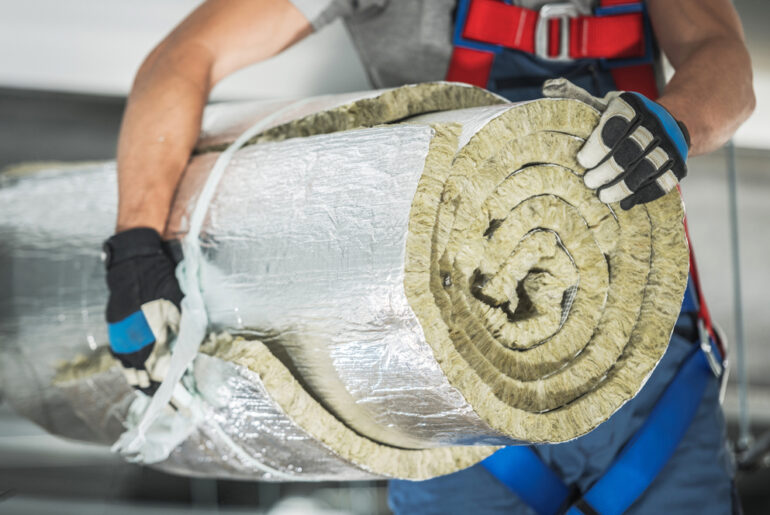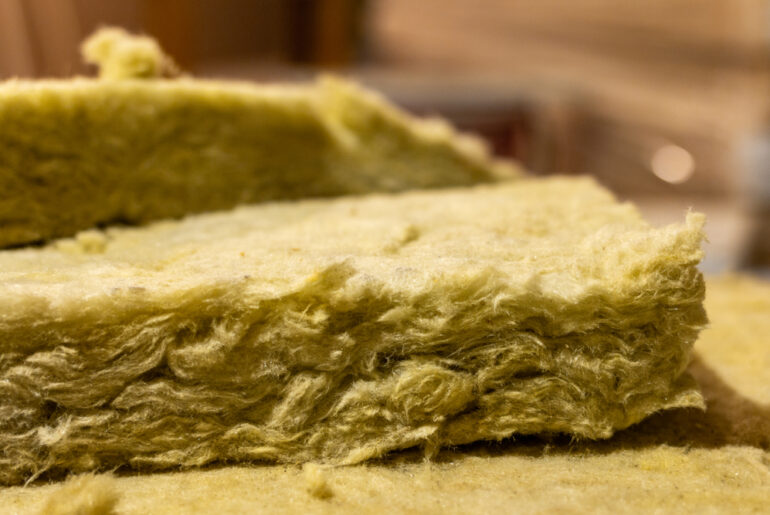“Insulation materials may cause cancer.” “Insulation materials expose you to skin irritants.” These are some of the many negative things we hear about insulation.
How many of these are myths, and how many actually have any merit to them? If insulation really does make you sick, why do governments and building codes around the world require it?
It’s important to understand that insulation, when used correctly and with the proper precautions, is not going to make you sick. However, the materials used for insulation can contain some dangerous substances. If they are improperly handled or installed, it is possible that people could become ill. Let’s discuss this in detail.
Here’s How Insulation Can Make You Sick
Before we go in, you have to understand that studies are still ongoing in this field. We learn new things every day, so it’s essential to stay updated.
Currently, researchers have identified the following potential risks of insulation materials:
- Lung Damage
- Carcinogens
- Skin irritation
- Dizziness
- Mold and Mildew
Lung Damage
If you inhale excessive quantities of insulation fibers, such as fiberglass insulation, they can cause lung scarring and inflammation. The same is also true for off-gassing due to spray foam insulation. Off-gassing refers to the release of chemicals and particles from insulation materials.
Formaldehyde is a common chemical ingredient in insulation materials. Inhalation of formaldehyde can result in respiratory problems. It may also act as a trigger for asthma.
Foam insulation materials also contain “catalysts” to help them cure. These catalysts are made of amines, which are a class of chemicals. When they off-gas, amines produce a sickly sweet odor, which is known to cause headaches, dizziness, and nausea, among other problems.
Carcinogens
Back in 1994, the US Food and Drug Administration (FDA) declared glass wool to be “anticipated to cause lung cancer.” The lung cancer scare started when it was discovered that the fibers of fiberglass insulation are just as fine as asbestos fibers.
The typical width of a glass wool insulation fiber is 5 to 10 microns, but some of them may be under 3 microns in diameter. These can be breathed in and lodged in the lungs, where they are not easily removed.
However, we have developed new manufactured technology since then. Manufacturers now use oils and binding resins to stiffen the fibers and reduce their diameter. Although this results in skin irritation in some cases, it saves installers from any potential cancer risks.
European regulators refuted the FDA’s claim in 1997 when they declared biosoluble glass wool insulation to be safe. The American Lung Association also called the material safe if properly installed.
In 2001, the International Agency for Research on Cancer (IARC) also changed its classification, removing fiberglass from the list of potential carcinogens.
Skin Irritation
There’s sufficient evidence to prove that insulation materials can cause skin irritation. The claim is especially valid for glass wool, as the tiny fibers can get lodged into the skin and may even cause rashes if not removed properly.
Installers are at the receiving end of this problem, as they’re more likely to be in contact with it while installing.
The best way to avoid this is by wearing protective clothing and using gloves whenever you handle fiberglass insulation materials.
Dizziness
Fiberglass insulation has a chemical called methyl ethyl ketone, which is used by the manufacturers to reduce the melting point of the material. It has been linked to symptoms like dizziness, nausea, and headaches in some cases.
However, you will only experience these effects if you inhale the chemical in large amounts. Early symptoms include coughing and itching. Besides the throat, the chemical may also irritate your eyes and nose.
Mold and Mildew
Insulation doesn’t necessarily cause mold and mildew, but it could be the breeding ground for it. If you live in a humid place, the dampness and lack of ventilation could allow mold spores to proliferate within fiberglass insulation material.
Common health effects of mold include headaches, fatigue, itching, coughing, respiratory illnesses, and difficulty breathing.
The Centers for Disease Control and Prevention (CDC) also reports that mold exposure is linked with upper respiratory tract symptoms in otherwise healthy individuals. It can also cause hypersensitivity pneumonitis in people prone to the condition.
Types of Insulation: From Safest to Least Safe
The good news is if you install insulation correctly, there shouldn’t be much of a health risk. However, it’s understandable why some people might want to be a little more careful, especially if they or a family member is predisposed to certain medical conditions.
Here are some safe insulation materials to consider.
Cork
Cork is an eco-friendly and health-safe insulation material. The organic and sustainable material doesn’t need chemical binders, making it a safe choice for homes. Do note that it’s more expensive than other materials, like fiberglass.
Cellulose
Denim, cotton, newspaper, and plant material are typically used to make cellulose insulation. It’s fire retardant and contains borate, which is a naturally occurring mineral that prevents mold and fungal growth.
Sheep’s Wool
Again, it’s an expensive material. But it’s also completely natural and healthy. Like cellulose or fiberglass insulation, sheep’s wool can also be loose-filled or blown in. However, it has to be imported, which can eventually increase the carbon footprint of your insulation project.
Fiberglass
On the other end of the spectrum, fiberglass insulation is often implicated as a potential health hazard. It’s a man-made material containing glass fibers, sand, and other chemical binders.
While it is highly effective for keeping your house warm and energy efficient, it may release particles into the air if not properly sealed. Inhalation of these particles could lead to respiratory irritation and other more severe health risks.
How to Prevent Sickness From Insulation
As many health regulators and governmental bodies recommend, installing the insulation material properly can help limit risk and potential health hazards.
Do not try to DIY your insulation project. Instead, hire a professional that is certified to do the work.
Also, stay out of the area being insulated while the project is taking place. If you have to go into the room, wear a dust mask and other protective gear.
Is Insulation That Dangerous?
Reading all the risks of insulation, you might be wondering why even bother installing it in the first place. Well, there’s a reason why governments incentivize homeowners to use it.
In short, insulation has a lot of benefits that easily outweigh the risks as long as you take the necessary precautions. Insulation is extremely safe when installed correctly. More importantly, it can keep pests, water, and other forms of contamination out of your home, further benefiting your health.
It’s not uncommon to hear over-the-top stories of insulation-related health risks. Before you start panicking, do your research and make sure the information is backed up by trusted sources.





